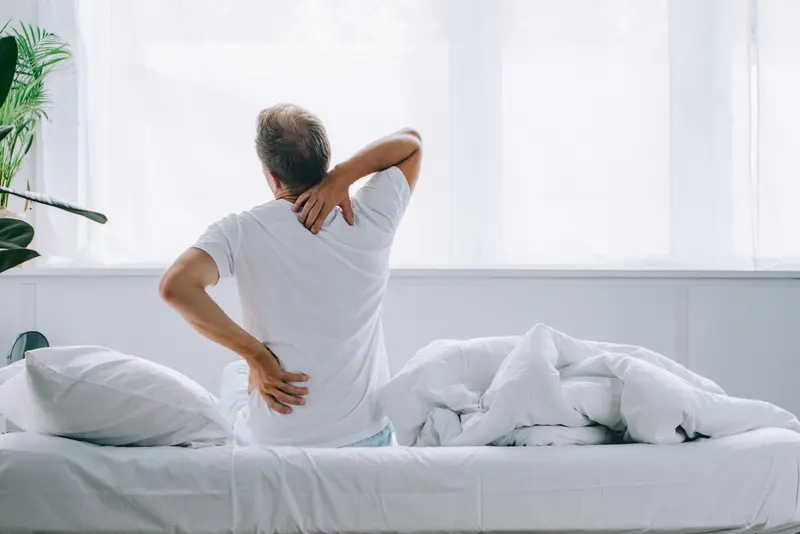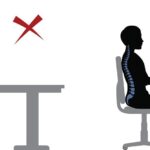You Wake Up Tired, Achy… and Wondering Why
Ever rolled out of bed feeling like you got into a wrestling match overnight? You stretch, pop your back, groan a little—and blame it on age or stress. But what if the real problem isn’t you… it’s your mattress?
Most of us don’t give our beds much thought. We fall asleep on them night after night, assuming they’re doing their job. But here’s the truth: the wrong mattress can quietly wreak havoc on your spine, muscles, and joints—especially if you’re already dealing with back pain.
If you wake up stiffer than when you went to bed, or if your lower back feels like it’s in a knot every morning, keep reading. Because the best mattress for back pain isn’t just about softness or firmness—it’s about support, alignment, and a little science-backed self-awareness.
✅ Key Takeaways: What This Article Will Help You Understand
-
How your current mattress could be causing or worsening your back pain
-
What spinal alignment really means—and why it matters in bed
-
The difference between memory foam, latex, hybrid, and innerspring mattresses for back pain
-
How to test if a mattress is truly good for your back (at home or in-store)
-
When it’s time to replace your mattress—even if it looks fine
Why Mattresses Matter More Than You Think
Let’s start with something simple.
You spend about a third of your life on your mattress. That’s roughly 2,500 hours a year. If your mattress isn’t supporting your spine properly during all that time… you’re going to feel it.
🔍 What Happens When a Mattress Doesn’t Support You?
When your spine isn’t aligned while you sleep, your back muscles have to do extra work. Instead of resting and resetting overnight, they’re stuck in tension mode. That creates:
-
Lower back pain in the morning
-
Neck stiffness or shoulder soreness
-
Interrupted sleep from tossing and turning
-
Fatigue that no coffee can fix
A 2015 review published in Applied Ergonomics found that medium-firm mattresses, especially those customized for spinal alignment, reduced back pain and improved sleep quality significantly compared to firm ones【source: Applied Ergonomics】.
Is Your Mattress the Culprit? Here’s How to Tell
🛏️ 1. You Wake Up with Pain That Improves During the Day
If your back hurts in the morning but feels better after moving around, your mattress is likely the issue.
🛏️ 2. You Notice Sags, Lumps, or Indentations
Even small dips in the surface can throw off your spinal alignment. Mattresses typically lose support after 7–10 years, even if they look okay.
🛏️ 3. You Can’t Get Comfortable or Stay Asleep
Do you toss, turn, flip pillows, or wake up sweating? These are signs your mattress isn’t providing the comfort or temperature regulation your body needs.
🛏️ 4. You Sleep Better on a Different Bed
If you sleep great on a hotel bed or a friend’s guest bed but not at home—your mattress may be the problem.
What Is the Best Mattress for Back Pain, Really?
There’s no one-size-fits-all solution. But let’s break it down by what the spine needs during sleep.
🧠 Think: Neutral Spinal Alignment
That’s just a fancy way of saying your head, shoulders, hips, and knees should stay aligned—like if you were standing with perfect posture, but lying down.
Too-soft mattresses let your hips sink too far. Too-firm ones push against your joints and can create gaps in support.
So, what should you look for?
The 4 Most Common Mattress Types — And How They Affect Back Pain
🌀 1. Memory Foam
Best for: People who sleep on their side or need pressure relief
Why it helps: It contours to your body, supporting curves and easing joint pressure. But too-soft foam can cause your hips to sag.
Look for medium-firm memory foam with zoned support layers (firmer under hips, softer under shoulders).
🍃 2. Latex
Best for: People who want pressure relief but don’t like that “sinking” foam feel
Why it helps: Natural latex is springier and more breathable. It supports the spine while keeping you cooler than memory foam.
Great for combo sleepers (people who switch positions at night).
⚙️ 3. Hybrid
Best for: Almost everyone—but especially back and stomach sleepers
Why it helps: Combines innerspring coils for support and foam/latex layers for comfort. Many hybrids now offer zoned coils for added lower back support.
A good hybrid gives both lift and cushion.
🛠️ 4. Innerspring
Best for: People who like a firm, bouncy bed
Why it helps: Traditional coils provide good support, but can lack contouring. Without a comfort layer, innerspring mattresses may feel too hard or uneven.
Not ideal for chronic back pain unless combined with a supportive topper.
Choosing the Right Firmness for Your Sleep Position
| Sleeping Position | Ideal Mattress Feel | Why |
|---|---|---|
| Side Sleeper | Medium-soft to Medium | Cushions shoulders and hips, prevents spinal twist |
| Back Sleeper | Medium-firm | Keeps spine aligned, supports lower back |
| Stomach Sleeper | Firm | Prevents hips from dipping too low |
| Combo Sleeper | Medium to Medium-firm | Balances support for changing positions |
Other Mattress Features That Matter for Back Pain
🔹 Zoned Support
Mattresses with firmer zones under hips and lower back help maintain alignment—especially for back sleepers.
🔹 Cooling Features
Heat can cause restless sleep and stiffness. Look for gel-infused foam, breathable covers, or ventilated latex.
🔹 Edge Support
If you sit on the edge or tend to roll toward the sides at night, reinforced edges can prevent “saggy mattress syndrome.”
🔹 Motion Isolation
If your partner tosses and turns, memory foam or hybrids absorb motion so you don’t get jolted awake.
Tips for Testing a Mattress (Without Guesswork)
🛒 In-Store? Try These Tests:
-
Lie down for at least 10 minutes in your normal sleep position.
-
Slide your hand under your lower back—if there’s a big gap or pressure, it’s not right.
-
Pay attention to how easily you can change positions.
📦 Online? Look for:
-
A sleep trial of 90+ nights
-
Free returns
-
Clear warranty (ideally 10 years or more)
When to Replace Your Mattress (Even If It Looks Fine)
Many people hang onto mattresses far longer than they should. Here are signs it’s time:
-
More than 8–10 years old
-
You see visible sagging or feel dips
-
You sleep better anywhere else
-
You wake up sore or stiff most days
-
It makes creaking or shifting noises
Real Talk: You Deserve to Wake Up Without Pain
Back pain isn’t always about your age, your job, or your workouts. Sometimes, it’s the surface you sleep on every night that’s quietly making it worse.
Finding the best mattress for back pain isn’t about trends or marketing fluff. It’s about giving your spine the right kind of support so your body can heal while you rest.
Because sleep isn’t just rest—it’s repair. And you deserve to wake up feeling refreshed, not wrecked.
🙋♀️ FAQ: Best Mattress for Back Pain
1. Is a firm or soft mattress better for back pain?
Medium-firm mattresses are generally best for back pain, as they offer the right mix of support and comfort. Too soft or too firm can misalign your spine.
2. Can a mattress really cause back pain?
Yes. A mattress that doesn’t support your spine properly can lead to muscle strain, poor posture, and chronic lower back pain.
3. What mattress type is best for lower back pain?
Hybrid or memory foam mattresses with zoned support are ideal for targeting lower back pain and promoting alignment.
4. How long should I try a new mattress before deciding?
Give it at least 2–4 weeks. Your body needs time to adjust, especially if your old mattress was unsupportive.
5. Do mattress toppers help with back pain?
They can—especially if your mattress is too firm or too worn out. Look for memory foam or latex toppers about 2–3 inches thick.
6. Are expensive mattresses always better?
Not necessarily. Focus on support, construction, and trial policies—not price tags. Many high-quality mattresses are available under $1,000.
7. Is sleeping on the floor better for back pain?
Not usually. While firm surfaces can help some people temporarily, lack of cushioning can worsen joint pain over time.
8. How can I make my current mattress more supportive?
Use a firm topper, rotate the mattress regularly, or add plywood beneath it for extra firmness. But if it’s sagging, replacement is best.
9. Can side sleepers get back pain from the wrong mattress?
Yes. A too-firm mattress can create pressure on hips and shoulders, causing spinal misalignment. Look for contouring and medium softness.
10. What else can I do besides changing my mattress?
Stretch daily, improve posture, avoid screens before bed, and check your pillow height—it should keep your neck in line with your spine.
If your mattress is quietly sabotaging your sleep and spine, it’s time to make a change. You don’t need to suffer every morning, wondering why your back feels like it lost a battle overnight.
Start with awareness. Test your current setup. Know what your body needs. And when it’s time—invest in your rest.
You’ll thank yourself every morning.


